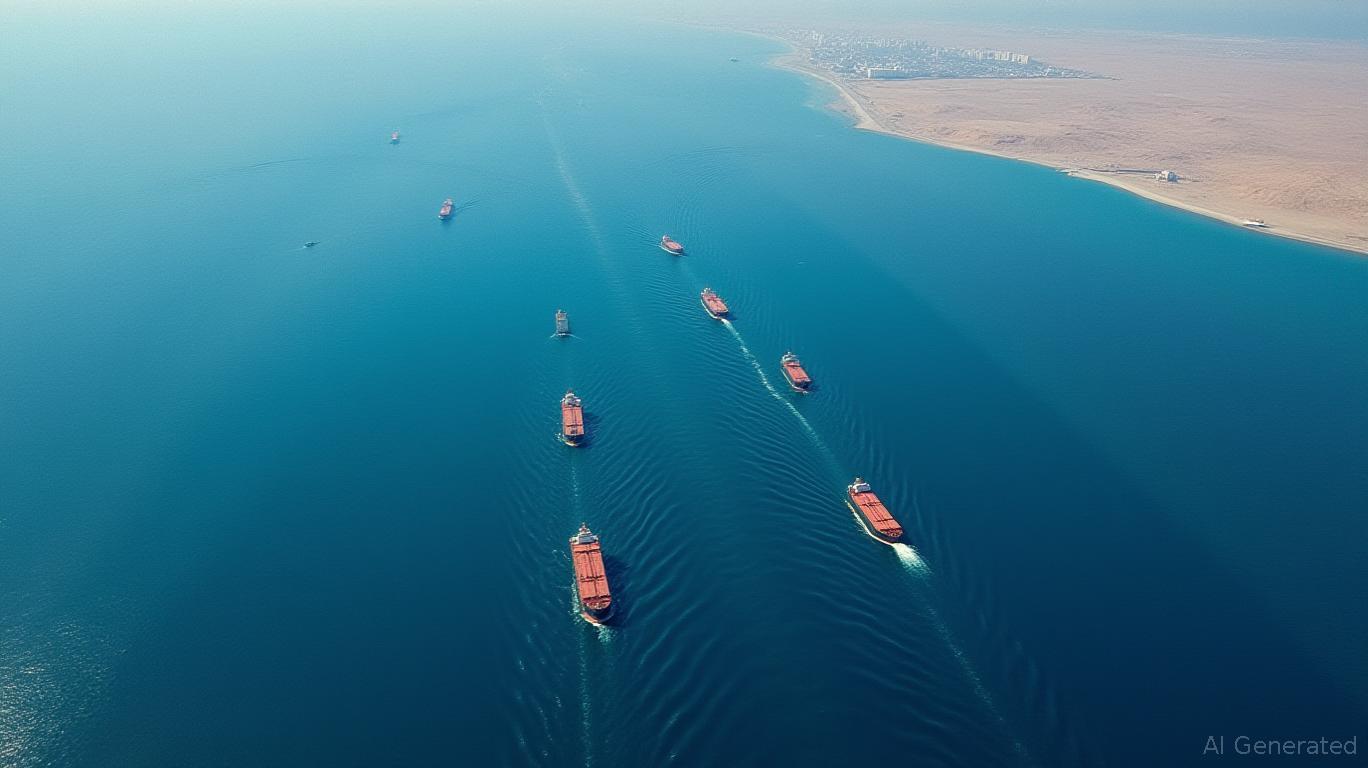Navigating the Strait: How Middle East Tensions Are Reshaping Energy Markets and Investment Strategies
The Strait of Hormuz, a 21-mile-wide chokepoint through which nearly 20% of the world's crude oil flows, has become the epicenter of escalating geopolitical risk. Recent Israeli strikes on Iranian energy infrastructure, retaliatory attacks on
, and the specter of a full Iranian blockade have investors bracing for a potential oil shock. Yet, as of June 2025, Brent crude trades at $70 per barrel—a price that reflects market complacency more than reality. The question for investors is clear: How should energy sector allocations be positioned amid this precarious balance of volatility and resilience?The Geopolitical Crossroads
The Israel-Iran conflict has intensified, with both sides targeting energy infrastructure. Israeli airstrikes have damaged Iranian facilities such as the Shahran fuel terminal and the South Pars gas field, while Iran retaliated by attacking Israel's Haifa Bay refinery and Chevron's Leviathan gas platform. The most vulnerable point remains Iran's Kharg Island terminal, which handles 1.5 million barrels per day (b/d) of Iranian exports. A strike here could immediately cut Iranian exports, but OPEC's spare capacity—over 3 million b/d—could theoretically offset the loss. However, Saudi Arabia and the UAE, both critical OPEC+ members, have publicly criticized Israel's actions, raising doubts about their willingness to compensate for Iranian supply cuts.
Meanwhile, Houthi attacks in the Red Sea have already disrupted 1.5–2 million b/d of shipping, forcing rerouting via the Cape of Good Hope. While the Strait of Hormuz remains open, its status is fragile. Analysts warn that even a partial disruption—such as a closure lasting weeks—could push prices toward $120 per barrel, overwhelming OPEC's buffers.

Oil Price Trajectories: Between Calm and Chaos
Current prices reflect a market betting on containment. Investors assume that neither side will escalate to a full-scale conflict, and that OPEC+ will eventually stabilize supply. Yet risks are asymmetric: the downside (prices falling further on de-escalation) is limited, but the upside (a supply shock) is vast.
Key Scenarios:
1. Stable Strait, No Major Conflict: Prices stay near $70, buoyed by OPEC+ discipline and U.S. shale growth.
2. Partial Disruption (e.g., Kharg Island strike): Prices rise to $90–$100, testing OPEC's spare capacity.
3. Full Blockade or Wider Conflict: Prices surge to $120+, overwhelming global buffers.
Investment Strategies for Navigating Volatility
1. Diversify Across Energy Subsectors
Investors should avoid pure-play Middle Eastern energy stocks like Saudi Aramco, which face dual risks of sanctions and physical conflict. Instead, focus on global energy majors such as ExxonMobil (XOM) and Shell (SHEL). Their diversified operations and exposure to U.S. shale and Canadian oil sands provide insulation from regional turmoil.
For infrastructure resilience, midstream energy ETFs like the Alerian MLP ETF (AMLP) offer stable fee-based cash flows from pipelines and storage. These assets are less sensitive to oil price swings and benefit from long-term U.S. energy export growth.
2. Hedge with Futures and ETFs
- Long Positions for Upward Risk: Allocate a portion to crude oil futures (CL) or leveraged ETFs like the ProShares Ultra Bloomberg Crude Oil (UCO) to capitalize on a supply shock. However, use these sparingly due to volatility decay in leveraged instruments.
- Inverse ETFs for Downside Protection: Pair long positions with inverse tools such as the Invesco DB Oil Fund (DBO) or the ProShares UltraShort Oil & Gas (DUG) to mitigate losses if tensions ease or oversupply returns.
3. Capitalize on Defense and Cybersecurity Demand
The conflict has spurred demand for missile defense systems and cybersecurity solutions, as Sino-Russian collaboration enhances drone and cyber warfare capabilities. Defense ETFs like the iShares U.S. Aerospace & Defense ETF (ITA) or SPDR S&P Aerospace & Defense ETF (XAR) provide exposure to firms like Raytheon and Lockheed Martin. For cybersecurity, Palo Alto Networks (PANW) is well-positioned to address vulnerabilities in energy infrastructure networks.
4. Maintain a Balanced Energy Allocation
The Energy Select Sector SPDR Fund (XLE) offers broad exposure to integrated producers, refiners, and infrastructure firms. A 5–10% allocation to XLE, paired with inverse ETFs, can balance risk. Avoid overexposure to upstream producers vulnerable to supply disruptions, such as Chevron (CVX) or ExxonMobil, unless hedged.
The Bottom Line
The Middle East's geopolitical volatility is a double-edged sword: it presents risks to oil supply chains but also opportunities for agile investors. While OPEC+ and U.S. shale provide a floor for prices, the potential for a supply shock demands hedging tools and diversification. Focus on resilient energy infrastructure, global majors with diversified portfolios, and defense/cybersecurity plays to navigate the uncertainty. As the Strait of Hormuz remains the world's energy lifeline, investors must prepare for both calm and chaos.
Final Note: Monitor the Strait of Hormuz traffic in real time and track U.S.-Iran nuclear talks progress. A closure or breakthrough in diplomacy could shift prices by $20/barrel within days.

Comments
No comments yet